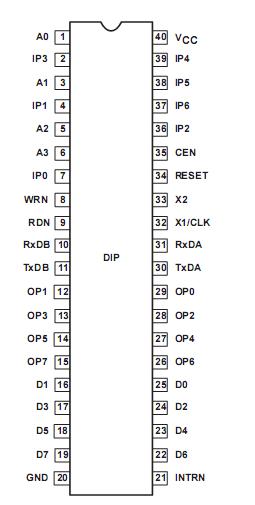SCN2681T: Features: Fast bus cycle times reduce or eliminate CPU wait states Dual full-duplex asynchronous receiver/transmitters Quadruple buffered receiver data registers Programmable data format¤ 5 to 8 da...
floor Price/Ceiling Price
- Part Number:
- SCN2681T
- Supply Ability:
- 5000
Price Break
- Qty
- 1~5000
- Unit Price
- Negotiable
- Processing time
- 15 Days
SeekIC Buyer Protection PLUS - newly updated for 2013!
- Escrow Protection.
- Guaranteed refunds.
- Secure payments.
- Learn more >>
Month Sales
268 Transactions
Payment Methods
All payment methods are secure and covered by SeekIC Buyer Protection PLUS.

 SCN2681T Data Sheet
SCN2681T Data Sheet







